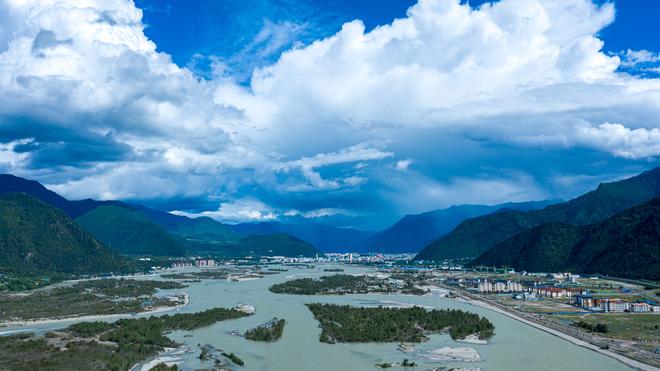Beijing — July 2025
China has officially started construction on a massive hydroelectric dam in the Tibetan Autonomous Region, a project billed as one of the most ambitious in the country’s history. The dam, located on the Yarlung Tsangpo River — which becomes the Brahmaputra River as it flows into India and Bangladesh — is expected to become the largest of its kind in Asia and a centerpiece of China’s renewable energy strategy.
The Chinese government claims the project will help meet its long-term climate goals, reduce dependence on coal, and support economic development in remote Tibetan regions. But the move has triggered immediate concern from environmental groups, water security experts, and neighboring countries that rely heavily on the river’s natural flow.
A Bold Project With Global Implications
The mega-dam is part of China’s 14th Five-Year Plan and is being developed by state-owned PowerChina. It is expected to generate up to 60 gigawatts of electricity, surpassing the capacity of even the Three Gorges Dam — currently the largest hydroelectric project in the world. Once completed, the dam could significantly boost China’s green energy output.
However, the scale and location of the project have sparked international unease. Tibet’s high-altitude glaciers are the source of many of Asia’s major rivers, and any large-scale water diversion or damming project in this region has the potential to impact millions downstream.
Tensions Rise in South Asia
India and Bangladesh — both of which lie downstream of the Brahmaputra — have expressed growing concern over the lack of transparency and consultation surrounding the dam’s construction. The Brahmaputra plays a vital role in agriculture, fisheries, and livelihoods in northeastern India and parts of Bangladesh, and any alteration in its flow could have devastating effects on local populations.
Indian officials have called the project “a unilateral move with regional consequences.” While China has repeatedly assured that it will maintain a minimum ecological flow and not harm downstream nations, critics point out that no legally binding water-sharing agreement exists between China and India regarding the Brahmaputra.
“This dam is not just an engineering project — it’s a geopolitical signal,” said a senior analyst at the Centre for South Asian Strategic Studies. “It will give China a strategic upper hand during any future conflict or tension involving water security.”
Environmental Impact Under Scrutiny
Environmental activists are raising alarm about the potential ecological damage the dam could cause. The area is home to fragile ecosystems, rare flora and fauna, and indigenous Tibetan communities. Large-scale construction could disrupt biodiversity and increase the risk of landslides, flash floods, and river pollution.
“This is one of the world’s last untouched river systems, and altering it for political or economic gain is a dangerous gamble,” said an official from the International Rivers NGO.
Concerns have also been raised about the lack of environmental impact assessments released to the public. Satellite imagery confirmed land clearing and early construction activities near Medog County, where the river plunges into a deep gorge — a prime site for hydroelectric exploitation.
Calls for Diplomacy and Regulation
Experts are now urging China to engage in multilateral dialogue with its neighbors to ensure equitable and sustainable use of the shared river system. India, for its part, is considering its own hydroelectric projects on the Brahmaputra in response, potentially setting the stage for a regional water race.
“The need for a water-sharing treaty or a regional river commission has never been more urgent,” said an Indian water policy researcher. “Without cooperation, the risk of ecological and diplomatic fallout is high.”
As construction accelerates, all eyes will be on the upper reaches of the Himalayas — not only for what the project could mean for China’s energy future but also for the ripple effects it could have on international relations, ecosystems, and millions of lives downstream.

